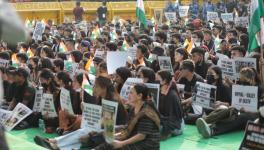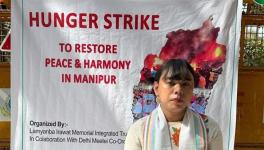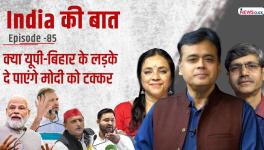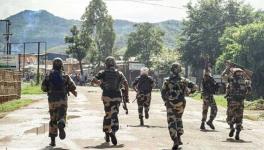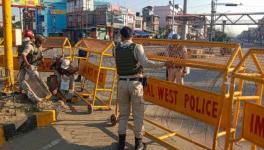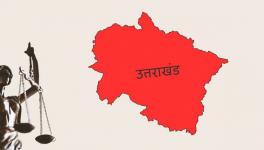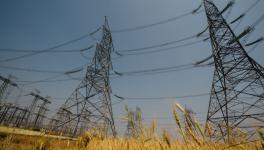‘Manipur Video Saved Survivors From Culture of Silence’
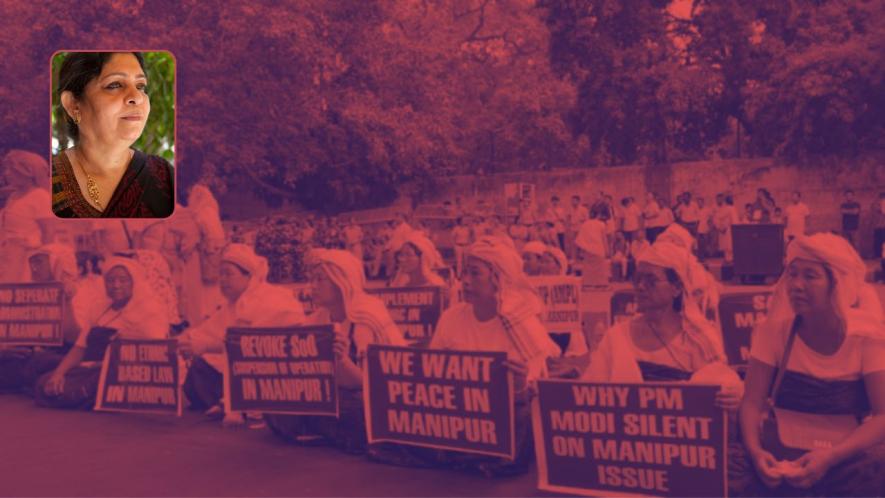
Days after a horrific video of sexual violence against two women in Manipur was circulated in the public domain, the Population Foundation of India (PFI), an NGO, in a statement spoke about how gender violence, class, education and social status go hand in hand.
In this email interview, Poonam Muttreja, executive director of the Population Foundation of India, shares with Aninda Dey crucial insights about violence against women. She says Indian society must no longer hesitate to shame and reprimand perpetrators—not the survivors—of such violence. Muttreja, who has been a strong advocate for women’s health, reproductive and sexual rights, and rural livelihoods for over 40 years, says the chances of women becoming targets of sexual and other violence increase during conflicts, but their physical and psychological trauma can also spill beyond its context. Edited excerpts:
Aninda Dey: In Manipur, a ghastly incident of women being paraded naked and molested came to light through a recent viral video. It made the nation express sorrow and disgust, but do you think the circulation of such videos can harm survivors? Are we getting brutalised by such visuals?
Poonam Muttreja: Let us first acknowledge that this is a global phenomenon. In this age of smartphones and social media, the surfacing of videos and photos has the risk of violating the privacy of individuals and, in some cases, compromising available evidence. There certainly are advantages, as videos and photos become documented evidence in many cases, helping strengthen the case for justice and mobilising public opinion.
The flip side is that with a mobile phone in every other hand today, videos and photos breach the privacy of individuals. Women who have faced horrific brutalities are subjected to unsolicited opinions and perceptions of people in both the offline and online worlds.
In the case of the videos from Manipur, the country got mobilised in support of the women who are survivors of violence though their dignity and privacy were compromised indeed, which is most unfortunate. However, we must credit sections of the national media for exercising restraint in the content they put out. Protecting the privacy of survivors of violence has to be non-negotiable and [all public outlets and individuals must] strictly prevent a brutal and voyeuristic response from society.
AD: How should society handle this dichotomy in our attitude towards women—either we neglect violence against them or we have emotional responses that may or may not lead to justice? Also, can you explain how the copious data on the nature of such violence help policymakers (or activists) combat crimes against women?
PM: Violence against women cannot and should not be tolerated in any civilised society. It is tragic that violence is deeply rooted in patriarchal values that objectify women. Instances of violence against women continue to be under-reported, a phenomenon that is also not unique to India. According to NFHS-5 [the fifth round of the National Family Health Survey, which released data related to 2019 to 2021] around 6% of women aged 18-49 years report having ever experienced sexual violence in their lifetimes.
Women’s experience of sexual violence is somewhat lower among younger women (3.5% for those aged 18-19, 4.2% for women aged 20-24 years, 6.2% for women aged 25-29 and 7% for women aged 30-39).
Widowed, divorced, separated or deserted women are far more likely (14%) to report having experienced sexual violence than women with any other marital status. The available data and evidence should inform policy-making and laws for preventing and, in fact, elimination of violence against women. The laws were made by the Verma Committee, but, sadly, policies and laws worldwide have not served women by and large.
AD: The statement issued by PFI on the Manipur violence highlights how different ‘categories’ of women, depending on status or identity, experience different levels of sexual violence. You have given data on educational levels. Could explain why a virtuous connection exists between higher education and lower chances of sexual violence?
PM: Education brings many advantages. Data shows that an educated woman is more likely to be socially and economically empowered, better informed and more effective in protecting herself. For instance, there is an inverse relationship between education and the likelihood of experiencing domestic violence. Women without any schooling face a higher risk (41%) compared with those with 12 or more years of education (20%).
Similarly, economic status follows the same pattern with women from the lowest wealth quintile being more vulnerable (41%) than women from the highest quintile (20%).
Education and economic opportunities can empower women to assert their rights and escape abusive situations. It is, therefore, essential to address the persisting educational and economic gender-based inequalities in society to combat violence against women effectively.
AD: Would you, as a gender expert, say that violence during aggravated situations like communal or ethnic conflicts falls in a completely different category? How can governments, experts and citizens handle these situations to prevent them?
PM: Any violence against women is equally heinous and unacceptable and should be treated as such. All conflict situations exacerbate the possibility of women being used as targets of sexual and other forms of violence. Yet the physical and psychological trauma cannot be measured only in the context of the situation. These crimes can be prevented by ensuring that women’s rights to life and dignity are protected sincerely.
Moreover, it is important to ensure adequate social protection measures are put in place by the administration. But our ultimate objective must be to work toward a society where women can live without fear and do not need to be ‘protected’. We must work today to change patriarchal and social norms perpetuating false notions of masculinity to prevent all forms of crime against women.
AD: Women from minority religious categories have also reported being targeted for their identity over the decades. Given Indian society has numerous ethnic and religious identities and, therefore, fault lines, how do you think we can ensure that women don’t bear the brunt when their communities erupt in conflict?
PM: Globally, women have been the targets of violence in times of natural disaster, conflicts, and wars. Sexual violence against women has been used as a “war tactic” for a long time throughout the world, including in India. The most vulnerable women, especially those from minority communities, are more vulnerable to sexual violence than majority religious communities.
If we look at aggregated data, women in Muslim communities (6.5%) are more vulnerable to sexual violence compared with other major religious communities like Hindu (6.0%) and Christians (4.1%). But we must not mistake violence against women as a religious issue. It is an issue of gender inequality, which is evident from the fact that almost all women experience some form of violence in their lifetime.
AD: Does India need to track, register, educate, and inform the public about sexual violence? Does the legal system need overhaul? Or do we need to find better ways to handle our social issues?
PM: Patriarchy is deep-rooted and will not go away in one day, but the pace of change can definitely be accelerated through systematic efforts to change social norms, girl education and women’s social and economic empowerment. We need to change the culture of silence and shaming the victim. It is the perpetrator who needs to be shamed and reprimanded.
Having laws and policies is inadequate if they aren’t implemented effectively and at a transformative pace. We must also address the societal barriers that prevent women from exercising their freedom and mobility. Society must recognise that we have failed women by not being able to prevent violence and ensure justice. We must accelerate justice and transformation at every level, preceded by a mindset change.
AD: Is Indian society over-reliant on politics and politicians to find answers and solve our gender problem?
PM: Governments are elected and trusted to not only protect people but also enhance the quality of our lives. However, each member of society has an obligation. Government systems and political machinery cannot be effective unless each member of society embraces gender equality and treats women with respect and dignity.
AD: The PFI statement also says that the Supreme Court, political parties and eminent persons have promised action against the guilty. But we have heard such remarks so often. Given the urgency, how would your proposal—a public health-led response—aid women?
PM: A health system’s response to violence against women and girls would include creating an enabling environment for the survivors to seek support without the fear of being stigmatised. Survivors of violence need care for physical, emotional, and mental trauma. The need of the hour is a non-judgmental, well-trained health provider along with adequate infrastructure. Frontline health workers have an important role as the first point of contact for most women, especially in rural India. Frontline health workers, like these ASHA workers, were recognised as heroes of the COVID-19 response and have exhibited their capability and commitment toward the people of India.
While political and administrative responsibility is supreme, the horrendous actions of the men who perpetrated violence must be held responsible and punished immediately. But for the videos, women would have experienced the culture of silence yet again.
Get the latest reports & analysis with people's perspective on Protests, movements & deep analytical videos, discussions of the current affairs in your Telegram app. Subscribe to NewsClick's Telegram channel & get Real-Time updates on stories, as they get published on our website.









